
When the weather gets warm, families with kids naturally move their daily activities outdoors to enjoy the sun and comfortable temperatures. As kids run and play outside, they get beneficial exercise, which helps them get stronger and stay healthy.
However, it’s important to monitor and supervise children’s play to keep them safe. Even around the home and in the backyard, there are potential safety risks that parents will want to minimize. A swing set or other play structure will give kids a happy place to climb and play, but this type of backyard playground needs to be constructed properly and maintained continually to make sure that it remains strong and safe. You can find outdoor playground installers near you to save time while having it securely assembled.
Parents also need to consider other elements of the play area, including the surfaces beneath any structures. Shock-absorbing surfaces will help minimize injuries from falls. Installing a fence around the backyard will keep kids in the yard as well as eliminate intrusions from animals while. A fence may be required by local codes to keep children safe around a pool.
Outdoor seating areas on a deck or porch will need maintenance to prevent issues with decaying wood and loose screws or nails. You can avoid the hassle of real wood and install a composite deck to reduce maintenance and repairs. Although both a deck and a play structure will require effort to maintain, a family’s enjoyment of these features tends to make the work worthwhile.
Backyard Playground Safety
Creating an enjoyable backyard sanctuary for children of all abilities is a common parental goal. Here are some assembly tips:
- When you install a play structure for climbing and swinging, spacing needs to be a minimum of 24 inches between swings and 30 inches between the swings and surrounding support frame.
- The space between the undersides of swing seats and the ground should be at least 8 inches, and all swing sets need to be anchored securely.
- Hardware such as open “S” hooks and protruding bolts should not be used on play structures.
Because more than half of the injuries on play structures involve falls, the surfaces below and around structures should be sufficiently shock-absorbing.
- Maintain a depth of at least 9 inches of wood chips, mulch, shredded rubber, pea gravel, or sand, extending this surface a minimum of 6 feet in all directions from the equipment.
- Parents should regularly inspect the equipment, looking for sharp edges or points, tripping hazards, and defective components.
- And teach children about stranger danger: If children see an unknown person, they should come into the house right away.
Resources:
- Playground Safety
- Summer Safety Checklist
- Outdoor Home Safety Handbook (PDF)
- Consumer Protection Fact Sheet: Home Playground Safety
- Is Your Home Playground a Safe Place to Play? (PDF)
- Playground Safety Self-Inspection Checklist (PDF)
- Playground Injuries: Fact Sheet
- Summer Safety
- Water Safety
- Summer Safety Survival Guide: Ten Tips to Keep Your Family Safe (PDF)
Deck Safety
Decks are an enjoyable and comfortable place to relax, grill out, and spend time outdoors. But because deck surfaces and features are exposed to the elements, it’s important to inspect the components regularly to make sure that they remain safe.
Moisture can lead to decayed wood, cracked boards, and loose components. Insects can also cause considerable damage to deck wood.
- Check for rotting boards and replace any that show signs of decay. If cracks or splits occur, it may be possible to repair them by filling and then sanding surfaces and resealing them.
- Check railings and banisters for loose parts and fix any connections if necessary. Metal fasteners on floorboards may corrode over time, and they can become loose as well.
- Check all connections and look for protruding nails or screws and make repairs if needed. When possible, consider replacing traditional metal fasteners with galvanized steel connectors.
- Check around the flashing where the house and the deck connect and clean away any debris that gathers in these areas to prevent moisture damage.
- Examine stairs to make sure the risers and stringers are in good condition.
- Apply sealant to deck wood seasonally to protect wood from moisture and sun damage and to extend the life of the deck.
Resources:
- How Safe Is Your Deck?
- General Deck Safety Tips
- Deck Safety Checklist
- Property Owner’s Guide to Deck Safety (PDF)
- What You Need to Know to Make Your Deck Strong and Safe (PDF)
- Important Tips to Remember for Backyard and Pool Safety (PDF)
- Deck and Pool Tips for a Safe Summer
- Are You Ready to Get All Decked Out? (PDF)
- Barbecuing Safety
- Backyard Safety Tips
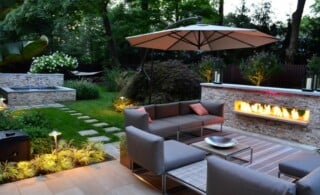 Outdoor Rooms: Enhance Your Outdoor Living
Outdoor Rooms: Enhance Your Outdoor Living 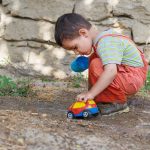 How to Create a Backyard Sanctuary for Kids with Disabilities
How to Create a Backyard Sanctuary for Kids with Disabilities 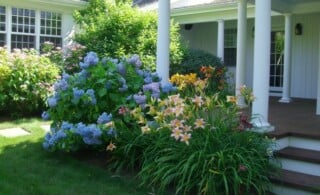 Spring Garden Flower Tips and Suggestions
Spring Garden Flower Tips and Suggestions 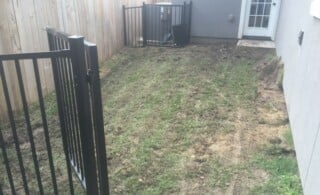 Plan Ahead for a Better Yard
Plan Ahead for a Better Yard 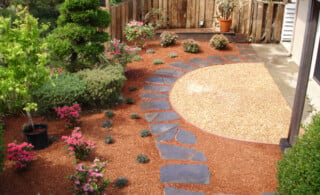 Dry Well Cleaning & Maintenance Tips
Dry Well Cleaning & Maintenance Tips 

Are You Familiar With This Topic? Share Your Experience.